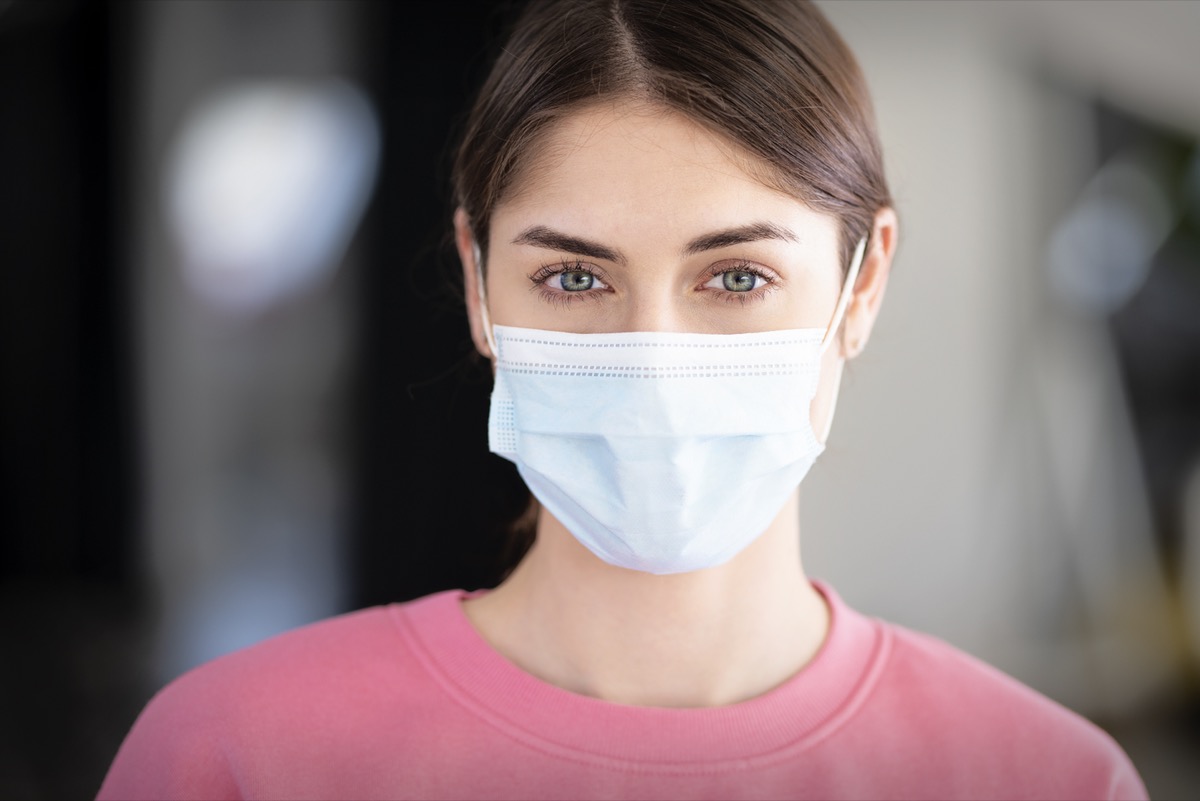Just when you thought COVID-19 was done and the pandemic was over, the virus proves it's not through with us yet. As we enter the third year of this unsettling time we're living in, COVID is still here and it's unclear when we will reach endemic status. "Yes, we are still in a pandemic. The coronavirus has mutated again and cases are on the rise," Glendale Memorial Hospital and TeamHealth tells us.
Many experts anticipate the virus is coming back with a vengeance as an uptick in cases is happening in several countries and now here in the states. But it's not just COVID health officials are worried about. It's a combination of the virus and flu striking at the same time. Dr. Morrow says, "We're looking to the United Kingdom and Australia, where there have been surges of COVID and influenza recently, to predict the rise of respiratory infections in the United States. The US often trails those countries' trends, which means a COVID surge and influenza surge are on the horizon for us."
Protecting your health is essential this winter and taking precautions like boosting your immune system by getting enough sleep every night, staying hydrated, making sure you're not deficient in essential vitamins like B, C, D and zinc, getting vaccinated, getting 150 minutes of physical activity a week and eating a healthy diet is always recommended by doctors. If you do get COVID, knowing the symptoms is important so you can take safety measures like staying home, wearing a mask and social distancing. Eat This, Not That! health spoke with experts who share what to know about COVID this winter and signs you have the virus. Read on—and to ensure your health and the health of others, don't miss these Sure Signs You've Already Had COVID.
Tameem Alhayya MD, Chief of Department of Medicine and Family Practice at Beverly Hospital and Co-Founder and CEO of Sunrise Medical Associates, LLC tells us, "In years past, traditionally October is the beginning of all colds and flus, COVID-19's stronger months are in the winter as well. Unfortunately, CDC and other bureaus are reporting a possibility of twindemics, a scenario where both flu and COVID-19 can hit at the same time. Our best advice as physicians is to aggressively encourage patients to get their flu vaccine NOW and during the winter months be extra vigilant with exercising preventative health with better nutrition, better sleep and daily exercise."
Harvard Health Publishing Harvard Medical School states, "With all the attention on COVID over the past two years, the focus on flu has waned somewhat. Last year's flu season was very mild — in fact, the peak number of positive cases was the lowest in at least the 25 years prior to the COVID-19 pandemic. But don't count on a repeat this winter."
Infectious disease specialist Dr. John J. Ross, assistant professor of medicine at Harvard Medical School says, "The general consensus is that this year's flu season could be worse than average, for a couple of reasons. First, Australia had a particularly severe flu season this year, with three times the normal amount of cases. Australia is in the southern hemisphere and their winter flu season peaks in August, often predicting what happens in the United States and elsewhere in the northern hemisphere, he notes. Second, the masking and social distancing that many people followed to prevent COVID also prevented the flu. But the era of widespread masking has ended, so we're expecting more viral transmission this season."

Dr. Thomas Yadegar, Pulmonologist and Medical Director of the Intensive Care Unit at Providence Cedars-Sinai Tarzana Medical Center tells Eat This, Not That! Health, "While the relaxed masking requirements and travel restrictions may give the illusion of a calm COVID-19 situation, the contrary is true: COVID-19 is still responsible for a significant portion of respiratory infections, along with hospitalizing select high-risk patients. Long COVID numbers continue to rise and wreak havoc on those suffering its debilitating effects."
Dr. Suman Radhakrishna, Director of Infectious Disease with Dignity Health California Hospital explains, "Pandemic as defined by Webster's is an infection occurring over a wide geographic area (countries and continents), and affecting a large number of people. If we go by this definition, we are still in a pandemic. However, infections with currently circulating variants are not as deadly. Our count of infection is not as accurate any more due to widely used home test kits, lack of reporting of those who test positive at home and asymptomatic/mildly symptomatic infections which go untested."
Dr. Ross tells Harvard Medical School, "We expect that COVID rates will rise again over the winter, although not at the same magnitude as last winter. There's clear evidence that Omicron — currently the most widely circulating COVID variant — spreads more easily than earlier strains, but it's less likely to kill you."

Dr. Radhakrishna breaks down what many people can expect with a COVID infection. "Asymptomatic infection is the beginning. People don't realize they have the virus until symptoms start showing. Day one to three people who have been infected with COVID can likely anticipate excessive coughing, scratchy throat, fatigue, feverishness, headache. Some individuals have nausea, loss of appetite, vomiting and diarrhea.
Dr. Radhakrishna adds, "Day four, five and six the symptoms mentioned above may worsen. Day seven and eight lingering fatigue, loss of appetite, inability to concentrate, all other symptoms start to improve. Day eight, nine and ten, many patients will start to recover, but the inability to concentrate for sustained activity, fatigue may last for some time."

Dr. Yadegar explains, "Looking at the recent developments in Britain, the first signs of COVID have vastly changed since the onset of the pandemic. Most patients experience a sore throat, but do not necessarily have fever or cough. It's paramount that patients who have a known positive contact or feel ill should undergo testing, as symptoms are variable between patients."
Eli E. Hendel, MD, a triple board-certified pulmonologist, sleep medicine specialist, and internist, the chief of medicine at Dignity Health Glendale Memorial Hospital and his own private practice adds, "The presenting symptoms of Omicron are different from the previous Delta variant. The most common is sore throat and running nose. ( problematic since it is also similar to influenza ) not as much loss of taste and smell as the previous delta. This is perhaps the reason why this variant goes undetected as many people do not test themselves when they experience these symptoms."

Experts continue to recommend the usual safety guidelines, even though most have been lifted. Dr. Radhakrishna urges, "Vaccinate against influenza and COVID. Quarantine for illness and possible exposure is another way to limit spread of infections. Social distancing and keeping our hands sanitized goes a long way to prevent getting infected. Although the mask mandate has been lifted, use of masks by individuals at high risk for infection is strongly recommended."
Harvard Medical School states, "All adults should get an annual flu vaccine, with the rare exception of people who've had a life-threatening reaction to the shot in the past. The vaccine is especially important for those with a higher risk for serious complications from the flu. This includes
–People over age 65
–Residents of nursing homes and other long-term care facilities
–People who have heart failure and other cardiac conditions, or who suffer from asthma, COPD, or other lung diseases
–People who have Parkinson's disease, multiple sclerosis, strokes, or other neurological problems
–People who have diabetes, weak immune systems, and chronic liver or kidney disease
–Pregnant women and new mothers. And to protect your life and the lives of others, don't visit any of these 35 Places You're Most Likely to Catch COVID.
The post Most People Who Have COVID Now Feel This Symptom First appeared first on Eat This Not That.
----------------
By: Heather Newgen
Title: Most People Who Have COVID Now Feel This Symptom First
Sourced From: www.eatthis.com/most-people-who-have-covid-now-feel-this-symptom-first/
Published Date: Sat, 29 Oct 2022 11:01:50 +0000
Read More
Did you miss our previous article...
https://naturesmart.us/fitness/5-exercises-to-lose-arm-fat-fast-that-trainers-swear-by
 HealthWellnessFitnessBeautyVideosPrivacy PolicyTerms And Conditions
HealthWellnessFitnessBeautyVideosPrivacy PolicyTerms And Conditions
